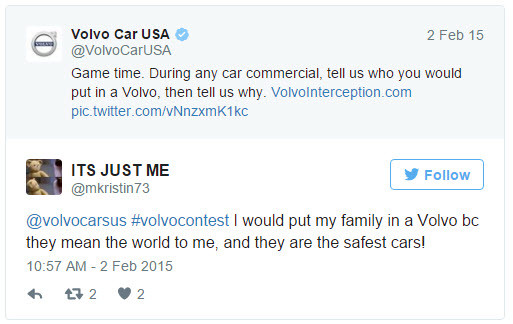Volvo – Greatest Interception Ever

When it comes to getting people’s attention, Volvo changed the game. The biggest interception did not occur during Super Bowl but online
The goal was to revive interest in the often low-key and overlooked Volvo brand.
In 2015, Volvo was hoping to take advantage of the fact that advertisers pay $4.5 million for 30 seconds of airtime during the Super Bowl, the most-watched media event of the year. Volvo used the constraint to influence its approach. Using the advertisement’s buzz to their advantage through deft digital second-screen strategies to divert consumers’ attention—during the game, not just once. They believed in the power of the media and commercial strategies to galvanize the country behind their brilliant idea.
Volvo needed to find a new audience to achieve its long-term aim of increased brand recognition and interest. Volvo used online videos and targeted social advertising to get people ready for their Super Bowl Sunday plans, both for people who already liked the brand and for people who didn’t think of Volvo first. Earned media could reach more people than just their current customers if they get new people interested in the brand.
Idea
The concept was straightforward. Volvo’s goal was to provide customers with a chance to help someone they care about rather than spend money on themselves in the hopes of becoming noticed. To Volvo’s credit, this strategy was congruent with the company’s reputation as a product that prioritises its customers’ needs. A simple tweet with the hashtag #VolvoContest would nominate a friend or family member. The hitch was that the tweet couldn’t go out until after an advertisement for a competing automaker had been shown during the Super Bowl. In response to each tweet, the company automatically sent a link to a brief nomination form where users could explain why their chosen person deserved one of five brand-new Volvo XC60s. People got ready for the Super Bowl with online videos and news coverage, and they stayed interested for hours thanks to Volvo’s tweets that matched what was happening in the game.

Awareness

There were several methods of spreading the word. Digital video services would be bolstered one week before the Super Bowl. As the big game got closer, Volvo used a strategic partnership with a certain network to get more people to know about it. Volvo’s success was largely due to an exclusive partnership that included a skit on Jimmy Kimmel Live! that was paid for by Volvo. There was a lot of publicity leading up to the weekend, and one way it was done was by giving away an XC60 on-air. Volvo made sure that, along with every other paid sponsor, the Volvo brand was recognized throughout the largest media week of the year by using aggressive in-game and post-game follow-up. On game day, Twitter interactions and actions would be driven by social media help that was sponsored before the game and was very focused on competition activity. On Sunday, the campaign was kept alive for a good chunk of the day by promoting reactions to in-game behaviour.
Outcome

The outcomes were really surprising. The campaign got more than 230 million earned media impressions worth more than $44 million, and more than 80 articles were written about it. More than 55,000 tweets were sent out about the #VolvoContest during the three-hour broadcast, making it the most-tweeted automotive hashtag on Super Bowl Sunday. A total of three times the hashtag #VolvoContest was a top trend on Twitter, and the brand Volvo itself was a top trend throughout the world. Even though Volvo didn’t have any ads during the big game, it was mentioned about 114,000 times on Twitter, making it the third-most-popular car brand. Over a week, Volvo’s online film had over 3,400,000 views, while the company’s website received over 116,000 visits. Many people joined Twitter just to nominate their children through tweets.
People took more than just the first step. More than 10,700 individuals out of a total of over 20,000 tweeters (a 54% completion rate) shared their unique and inspiring tales with us. The XC60’s year-over-year February sales rise of 70.7% was the biggest of any vehicle in its class.



